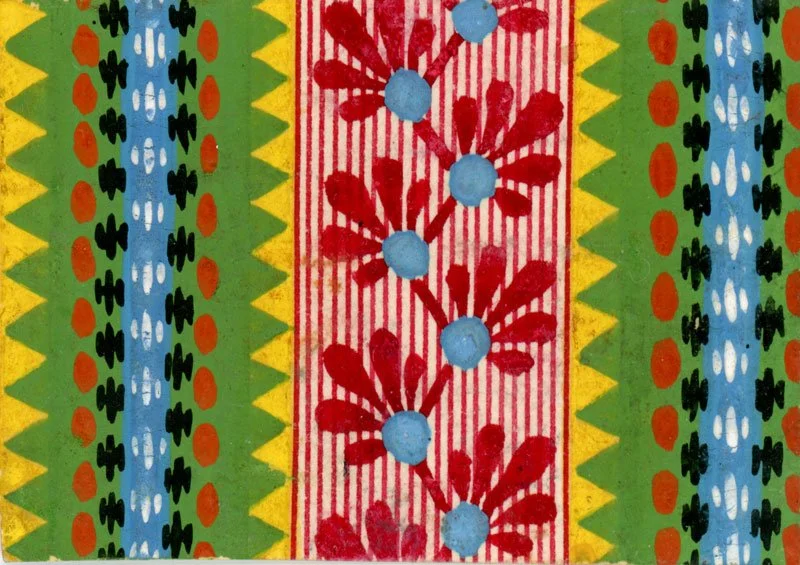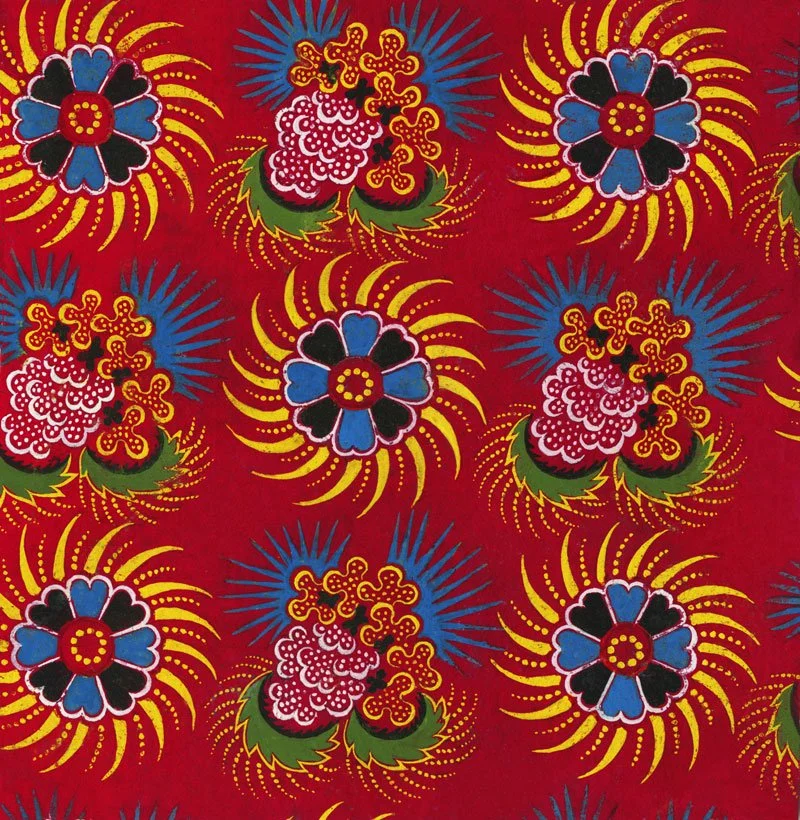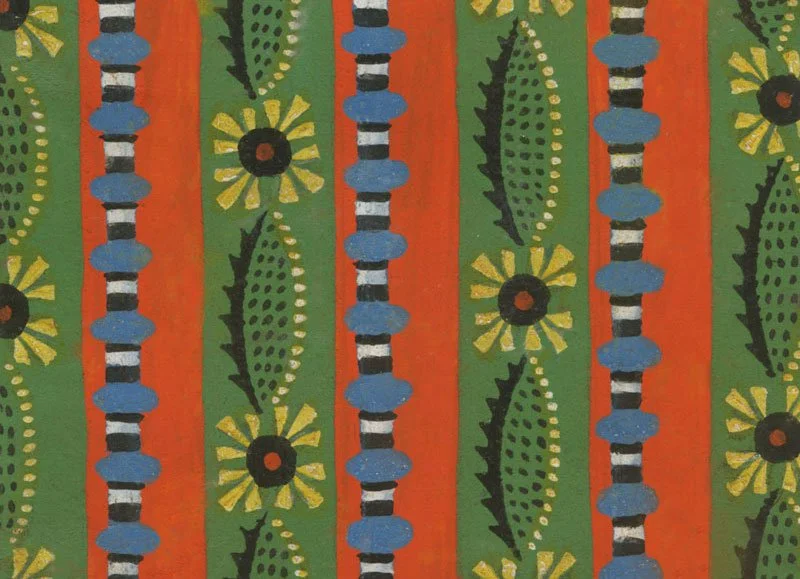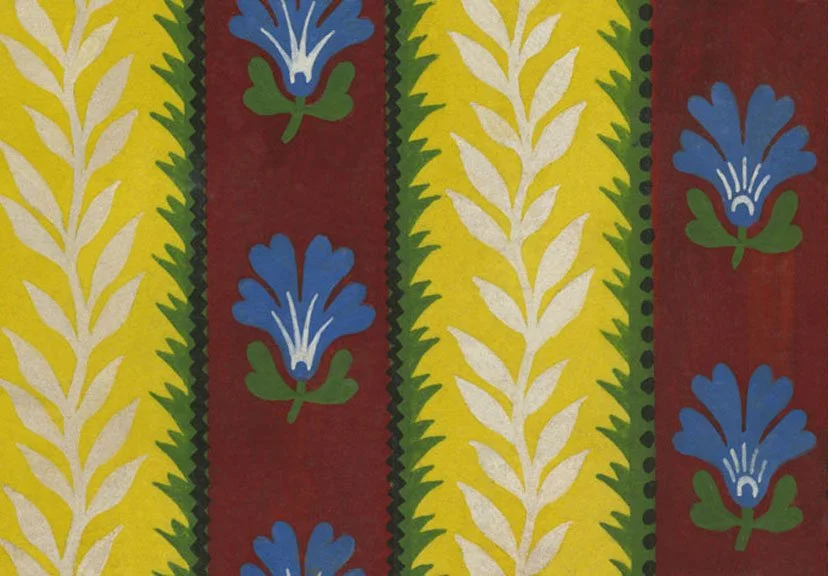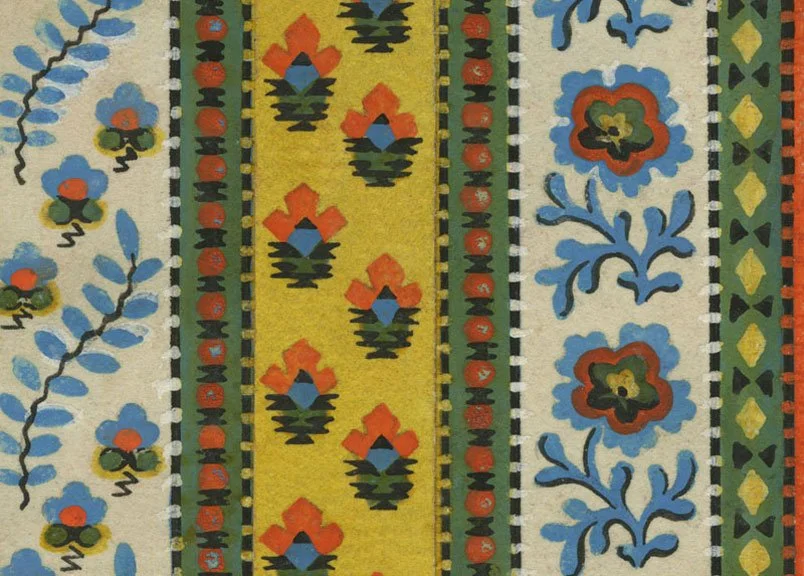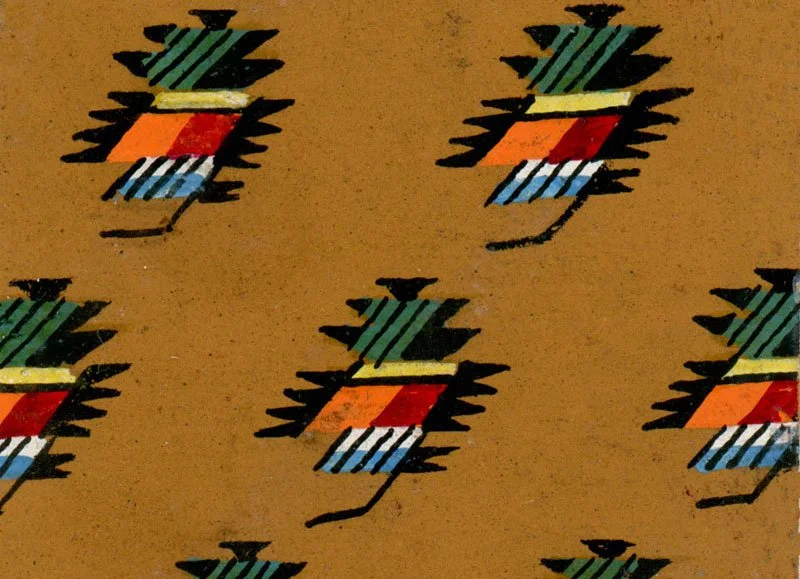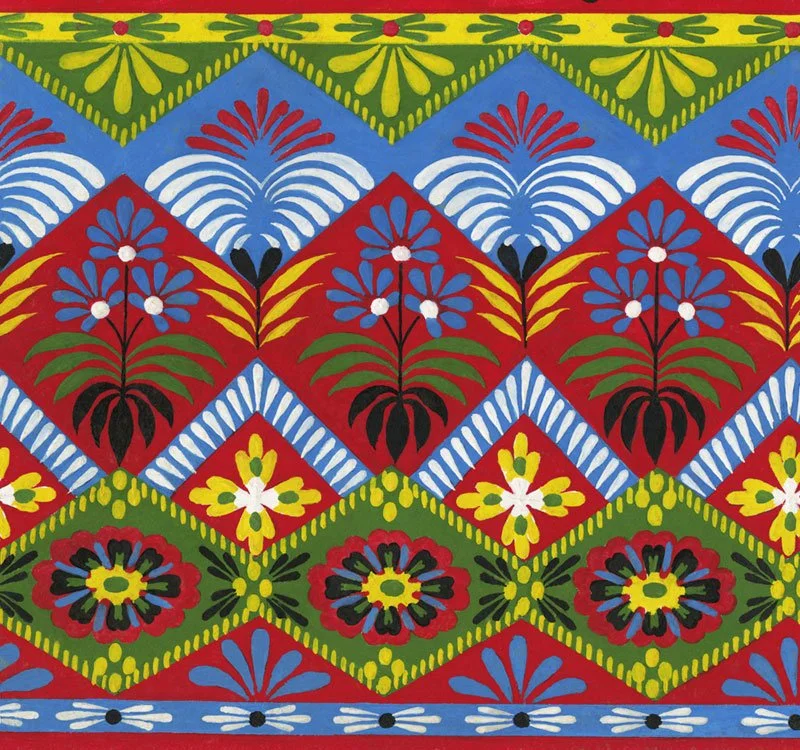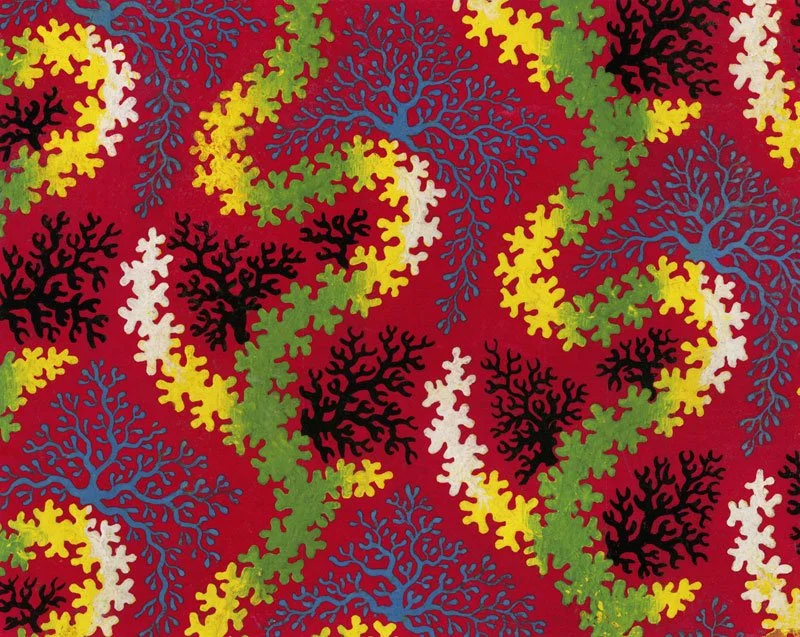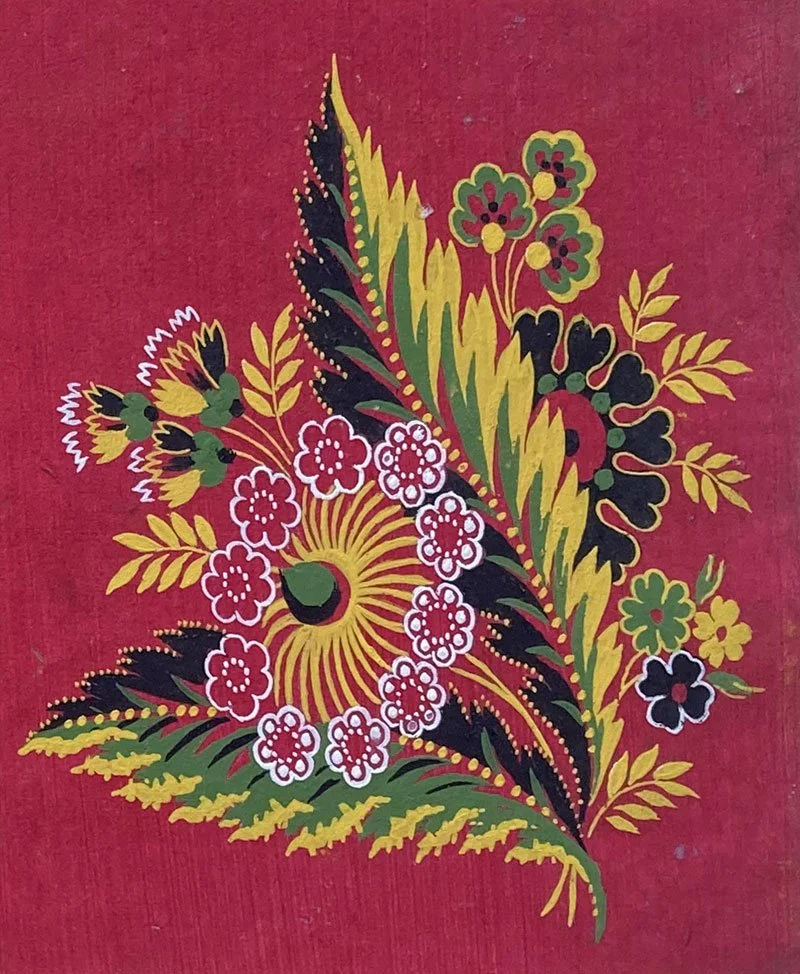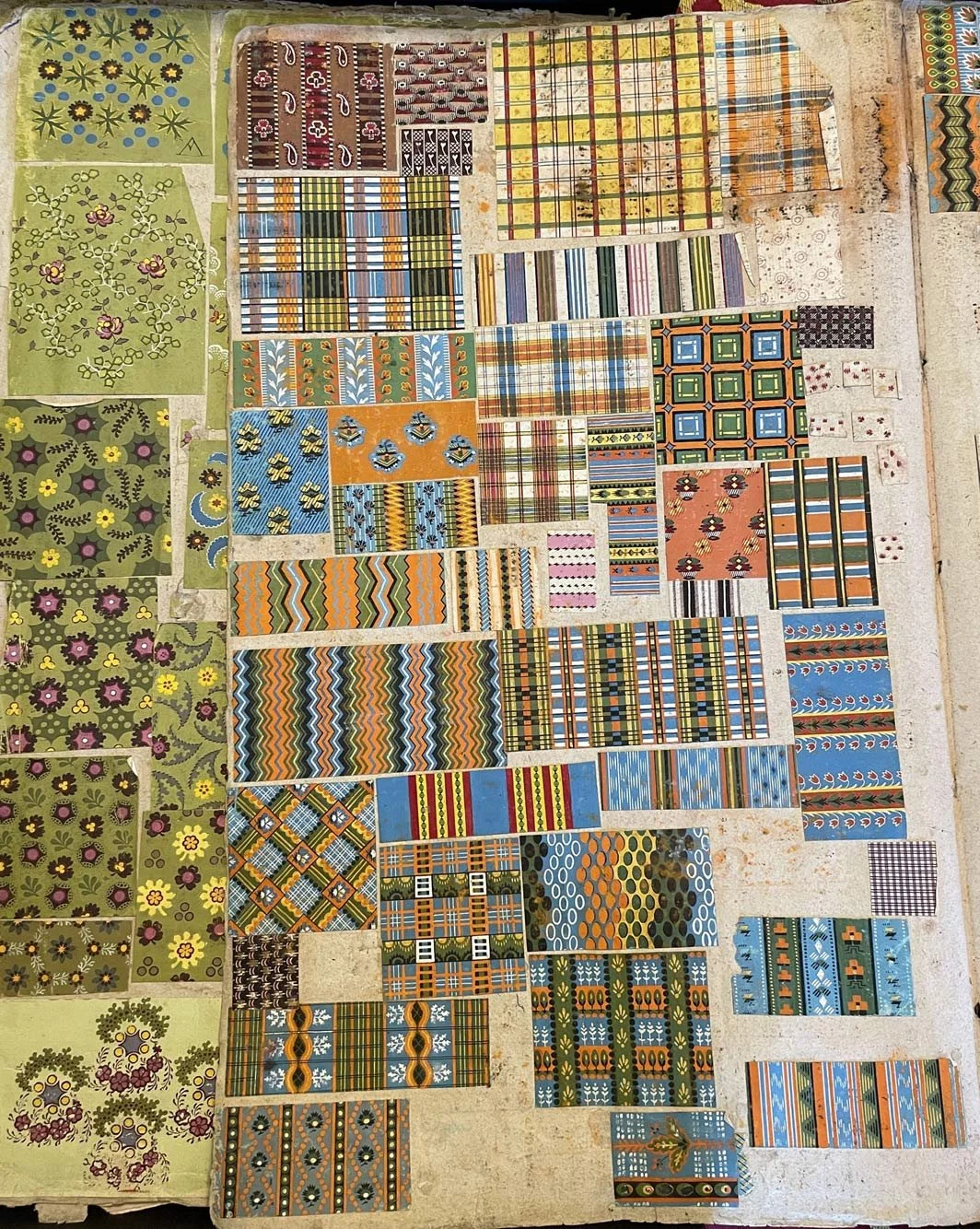Textile Designs on Paper
Gouache Painted Designs
“The gouache painted designs featured in Textile Designs on Paper come from 19th–century French pattern books, massive albums produced as records to manage the abundance of hand-painted patterns. These paintings were created by both known and unidentified artists who probably worked directly for a textile establishment in Alsace, a region that, at this time, belonged to France.
“With scruffy bindings, tattered fore-edges and blunted corners, their exteriors give little hint of the treasures within. In the most chaotic of the books, the gouache paintings are unnumbered and diverse, often crammed, sometimes 60 to a page, upside down and sideways in a delightful jumble.
“The paintings, known as mignonettes, maquettes or croquis, can be exquisite and jewel-like. Some are barely two centimetres square and show only one isolated motif; others are more substantial and repeat to indicate pattern. Although each painting represents just a portion of a larger pattern, there is no confusion about the design, the scale or the intended colours.” —Adapted from from Textile Designs on Paper, Introduction by Barbara Hodgson & Susan Meller
Pattern motifs include designs known as paisley, floral, geometric and abstract, and shapes such as flowers, leaves, stripes, zigzags, stars, polkadots and crosses.
Above are two gouache paintings, showing designs for Turkey red textiles:
“Many of the larger designs for women’s shawls and scarves featured the red, known as Turkey red (rouge d’Andrinople). First perfected in the Levant, Turkey red dyeing had been practiced in European countries, mainly Scotland, England and France, since the late 1700s. It was a complicated process employing madder, oil, dung, ox blood and other ingredients to produce a rich, vivid red. Around 1810, Alsatian dyers developed a way to discharge multiple colours onto cotton cloth that had been pre-dyed with Turkey red. Textile designers made good use of this new method and created thousands upon thousands of exuberant, fanciful designs. It was as if the technical discoveries of the early 19th century had not only stimulated the growth of the industry, but the imaginations of textile designers as well. The Turkey red paintings shown above are from a large Alsatian mill pattern book that dates from about 1820–30.”—Adapted from Textile Designs on Paper: “Printed French Textiles: A Brief History of Designs, Techniques & Uses,” by Susan Meller
Sample pages from the original pattern book that supplied the gouache painted designs for Textile Designs on Paper.
“Our pattern book originated with a printworks that had been founded in the early 19th century in Alsace, one of the centres of France’s cotton textile industry. Although it is not dated, the following old handwritten note was found inside: “Dans ce livre se trouvent des dessins de: Jean Benner père, 1796–1849; Jean Benner, 1835–1906; Emmanuel Benner, 1835–1895.” Emmanuel and Jean were twin sons of Jean Benner senior. The father, a notable artist, especially of flowers, was also a textile designer. So it might be he who created some of the exquisite designs that are included here.”—Adapted from Textile Designs on Paper: “Printed French Textiles: A Brief History of Designs, Techniques & Uses,” by Susan Meller

